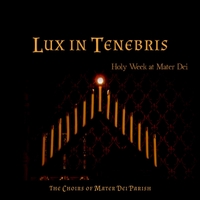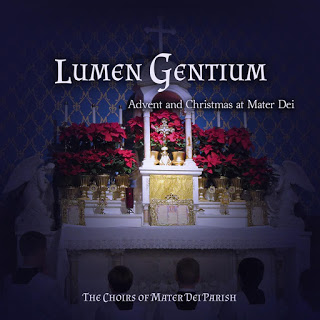Drake’s Tota Pulchra es Maria is a three part polyphonic motet for three male voices: tenor, baritone, and bass. I am releasing it under Creative Commons. A PDF download is available below.
Tota Pulchra Es Maria
Background
This setting of Tota Pulchra Es Maria was completed in mid to late June 2015. I updated the chant verses on 2015/7/3 to fix the unintentional variation I had made on the peregrinus tone in the original draft. This change would affect 9 downloaded copies from the Compositions page. Otherwise, the motet is unaltered.
This piece is simpler than some of the other motets I have written because I intend it for smaller choirs, where splitting into more than three parts is difficult. It could probably be adapted to women’s voices by changing the clefs; however, since this composition is targeting specifically our men’s schola, it is written for tenor, baritone, and bass.
Discussion
The range of this Tota Pulchra Es Maria is from a single low G in the bass to a single F in the tenor. The baritone is fairly range-locked from B-flat at the low end to A at the upper, which is pretty tame for that voice. The bass also sings to an A and is in the range of most baritones, if you happen to be short on true basses. Now that I think about it, the piece could probably be sung by three baritones in a pinch.
There are a number of places where the middle voice crosses with the higher or lower voice, most notably in measures 20 – 21, where the tenor has a sixth interval in et macula.
In keeping with the simplicity of the setting, there are no significant modulations away from the key (as is characteristic of Missa Spiritus Sancti, for instance), and there are no accidentals.
The overall tone of the piece is joyous, beginning and ending in F major. Et macula originals contrasts with this, moving to D minor and G minor; and non est in te transitions us back to major. The intended effect is to highlight our common affliction of original sin (minor) from which Mary is marvelously preserved (major).
As noted on the score itself, the verses may be sung together or alternating with the polyphonic section, but the piece should alway end with the polyphonic section. The verses use the peregrinus tone.
At measure 22 – 23, there are parallel fifths in the tenor and bass (mea culpa). There is also a hollow-ish sound of parallel fourths in originalis that is a bit open while the baritone has rests. I suppose if I am to break the rules, it would be appropriate to do so on the words macula originalis.
Tempo and Interpretation
As written, the piece is in cut time with half note = 72. I think it could also be taken a bit slower. Likewise, I have not written in dynamic markings to allow for more artistic interpretation. In general, like chant, the piece should swell as the voices rise in pitch and diminish as they descend or approach the end of a phrase.
It might also be a nice interpretation to add some separation between Tota pulchra es Maria and et macula, for here, the voices converge before the bass introduces the next theme.





